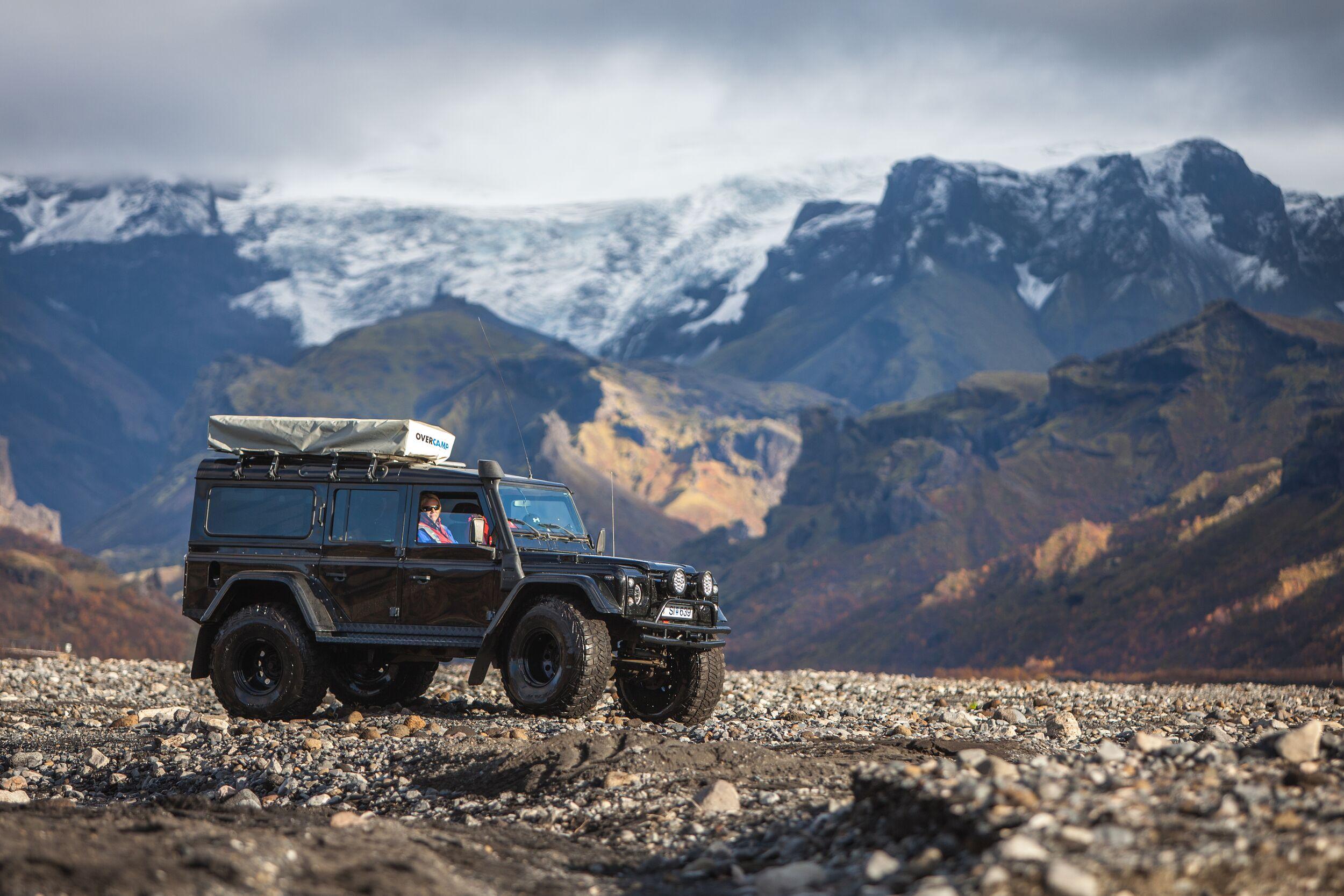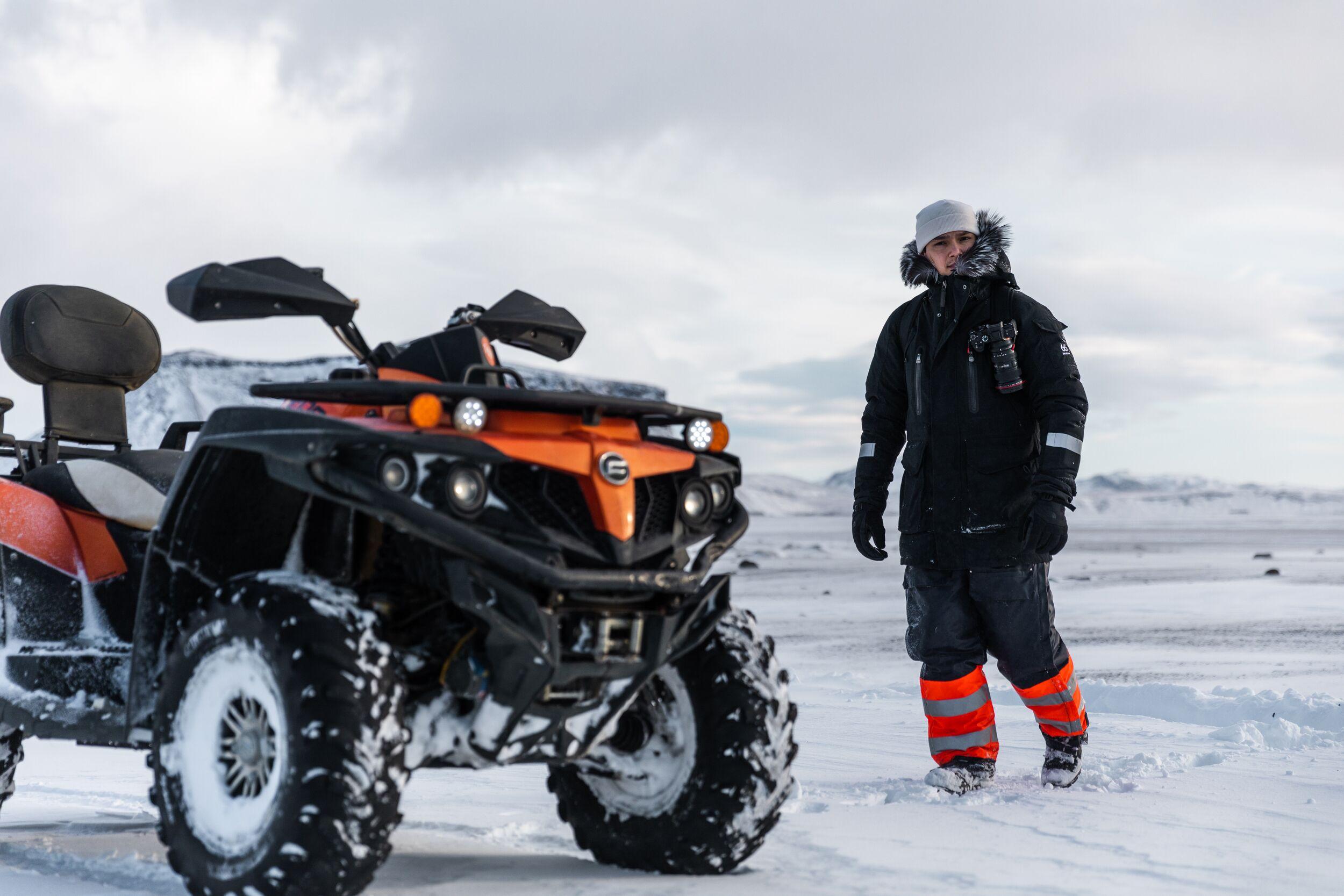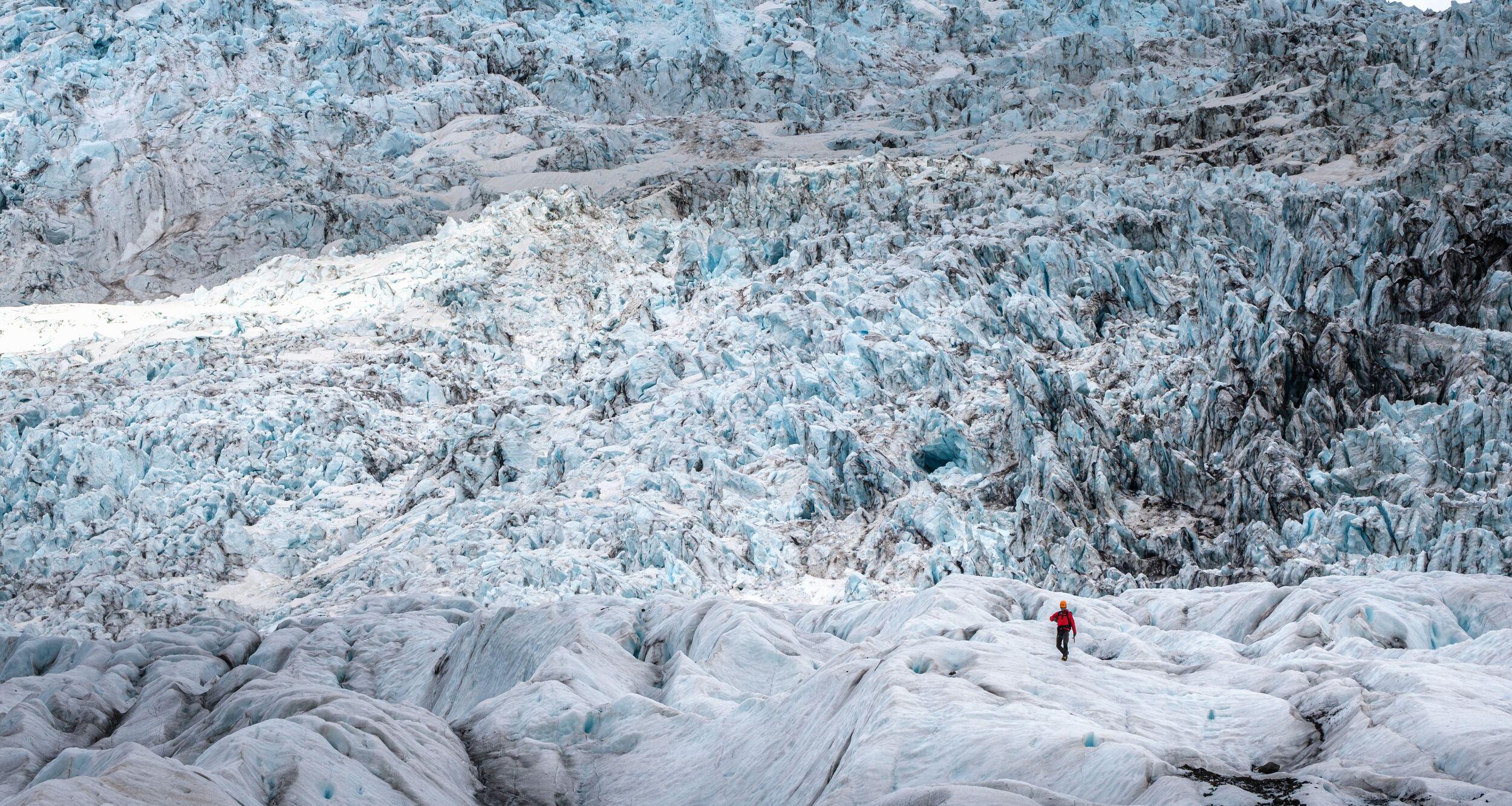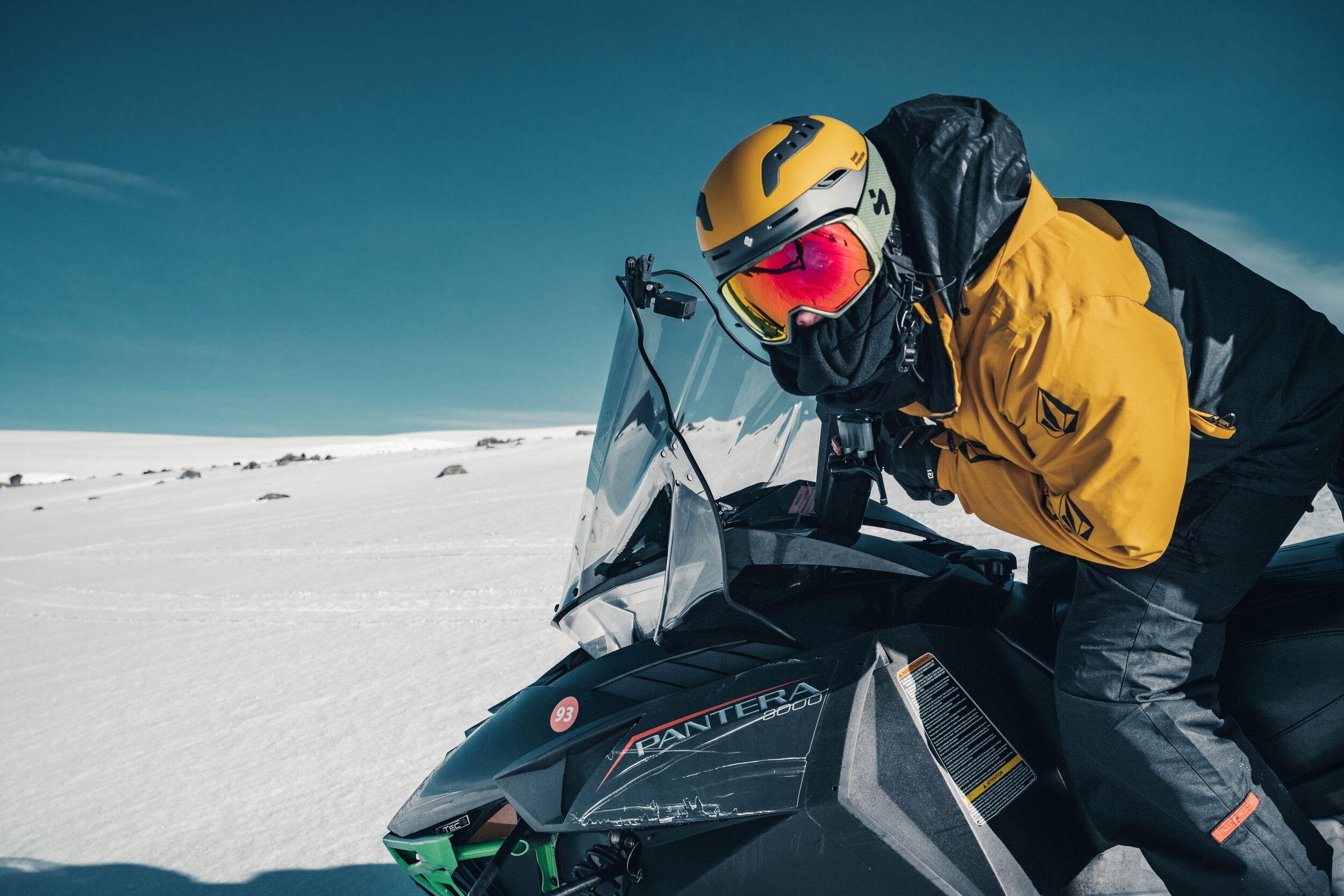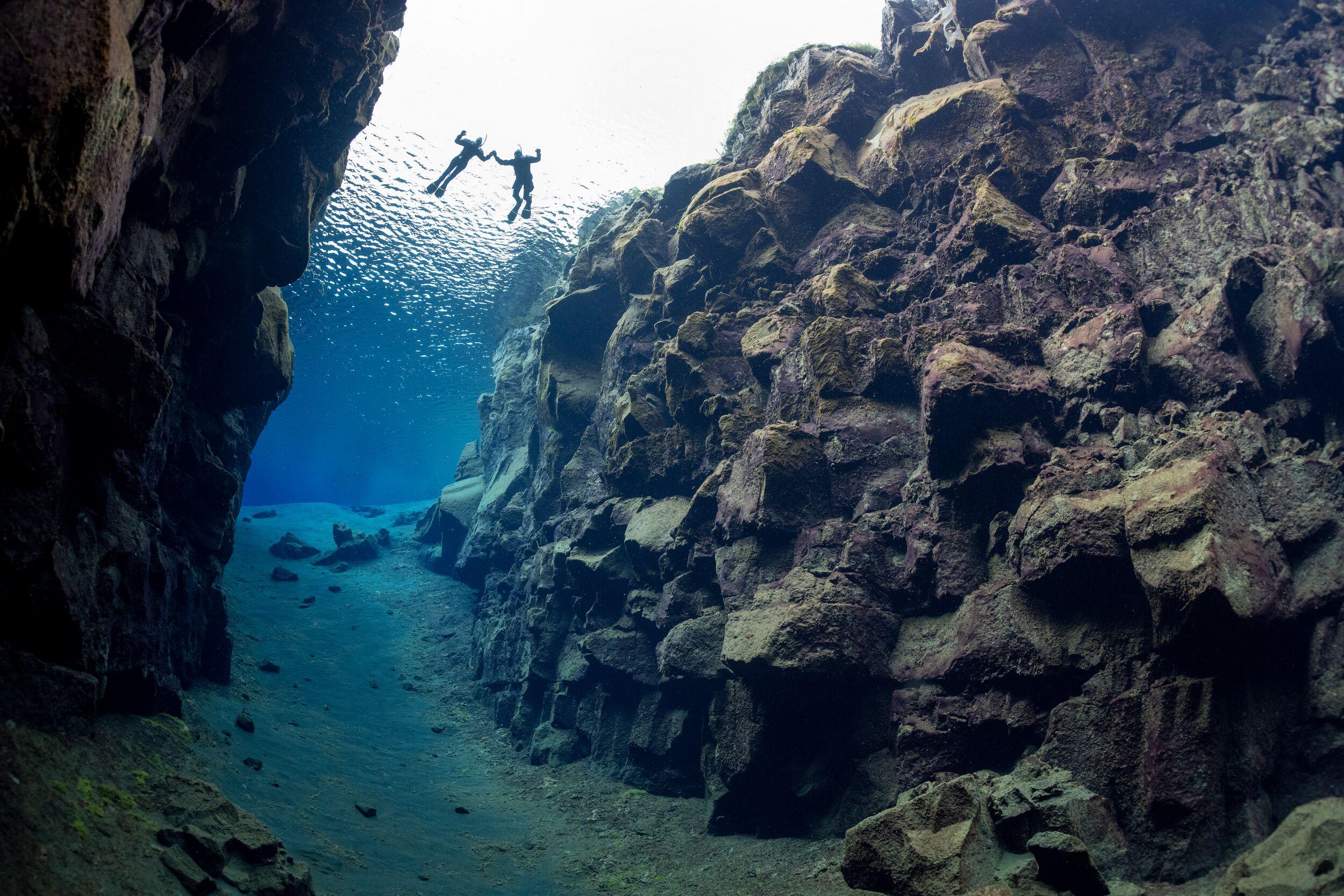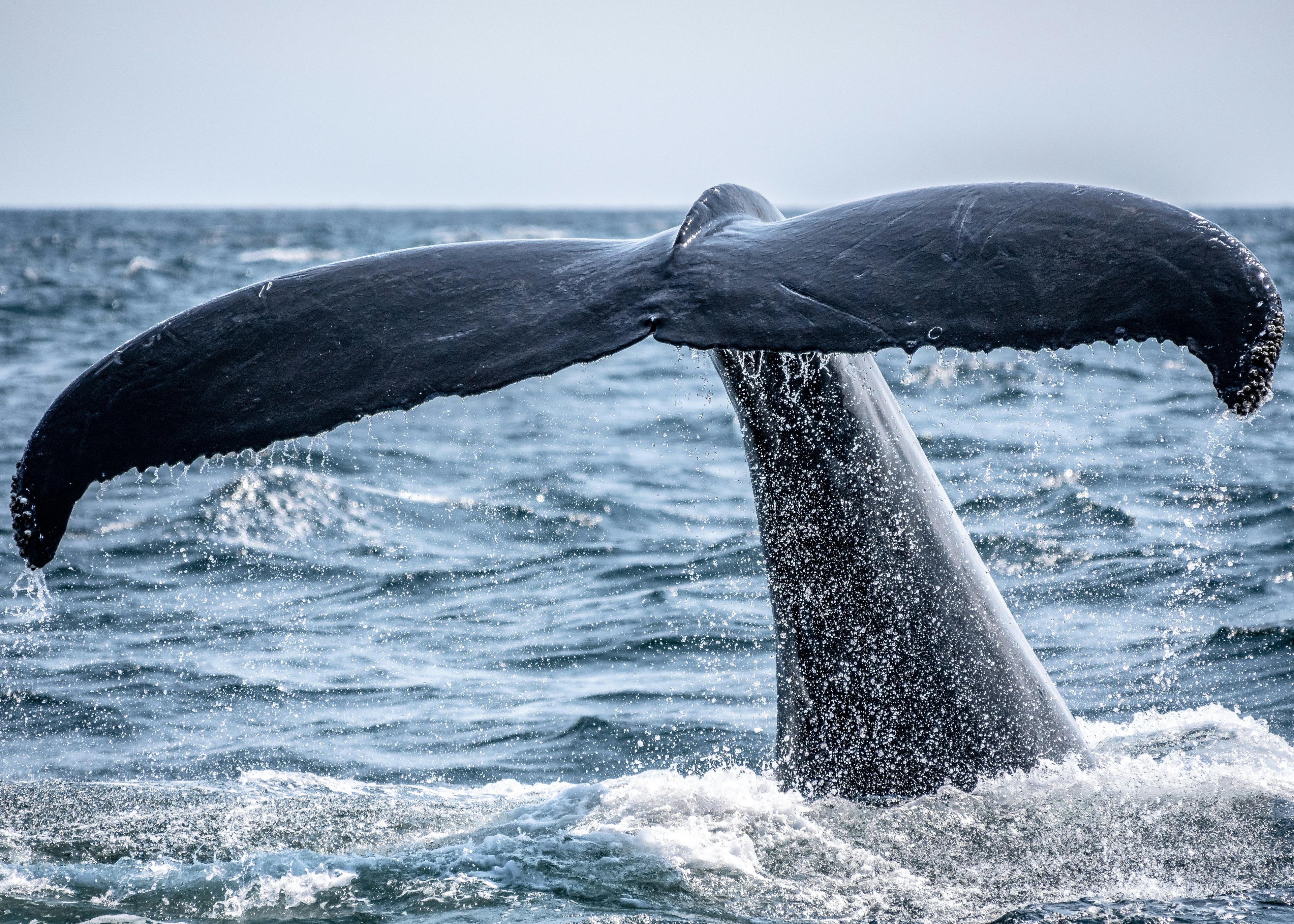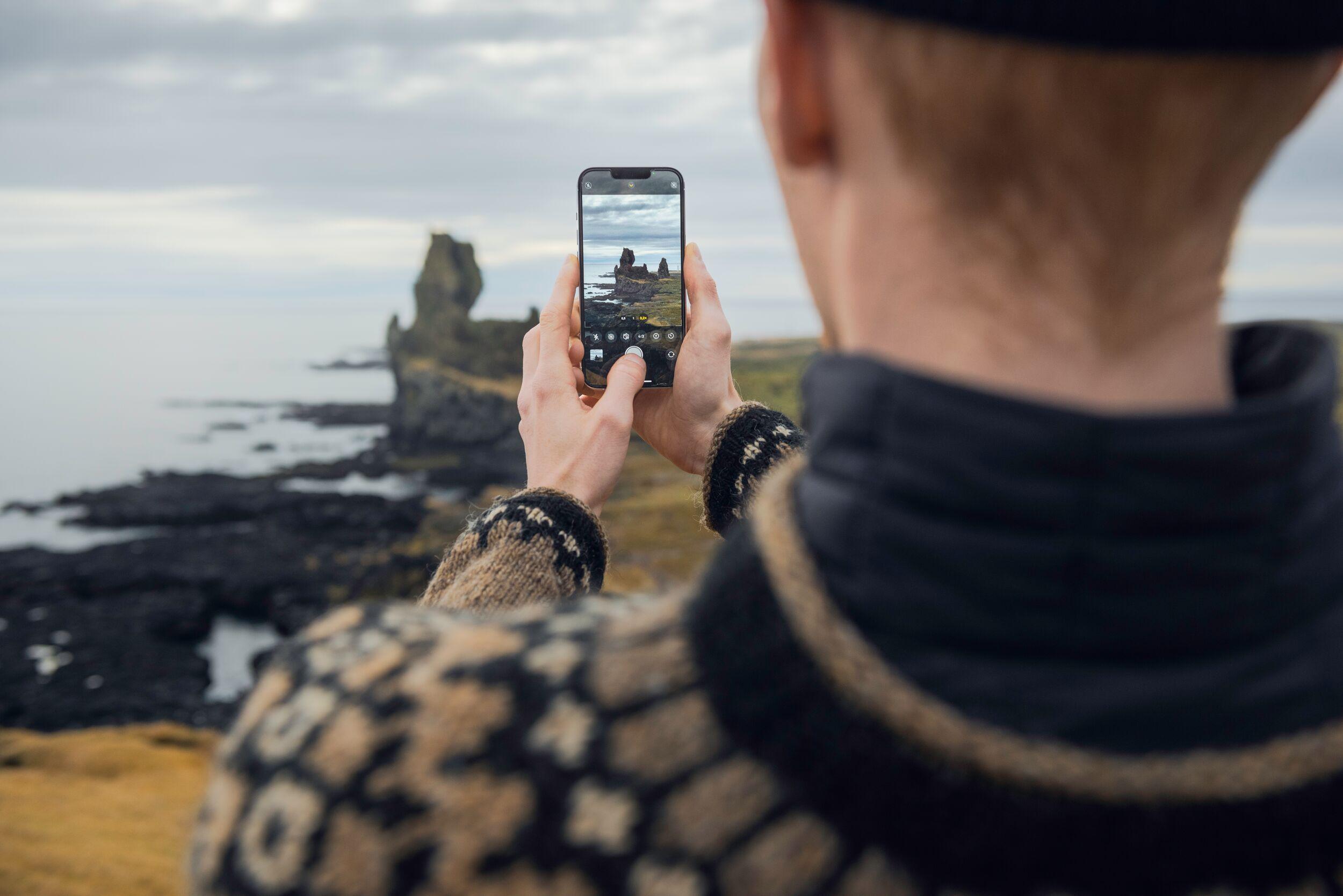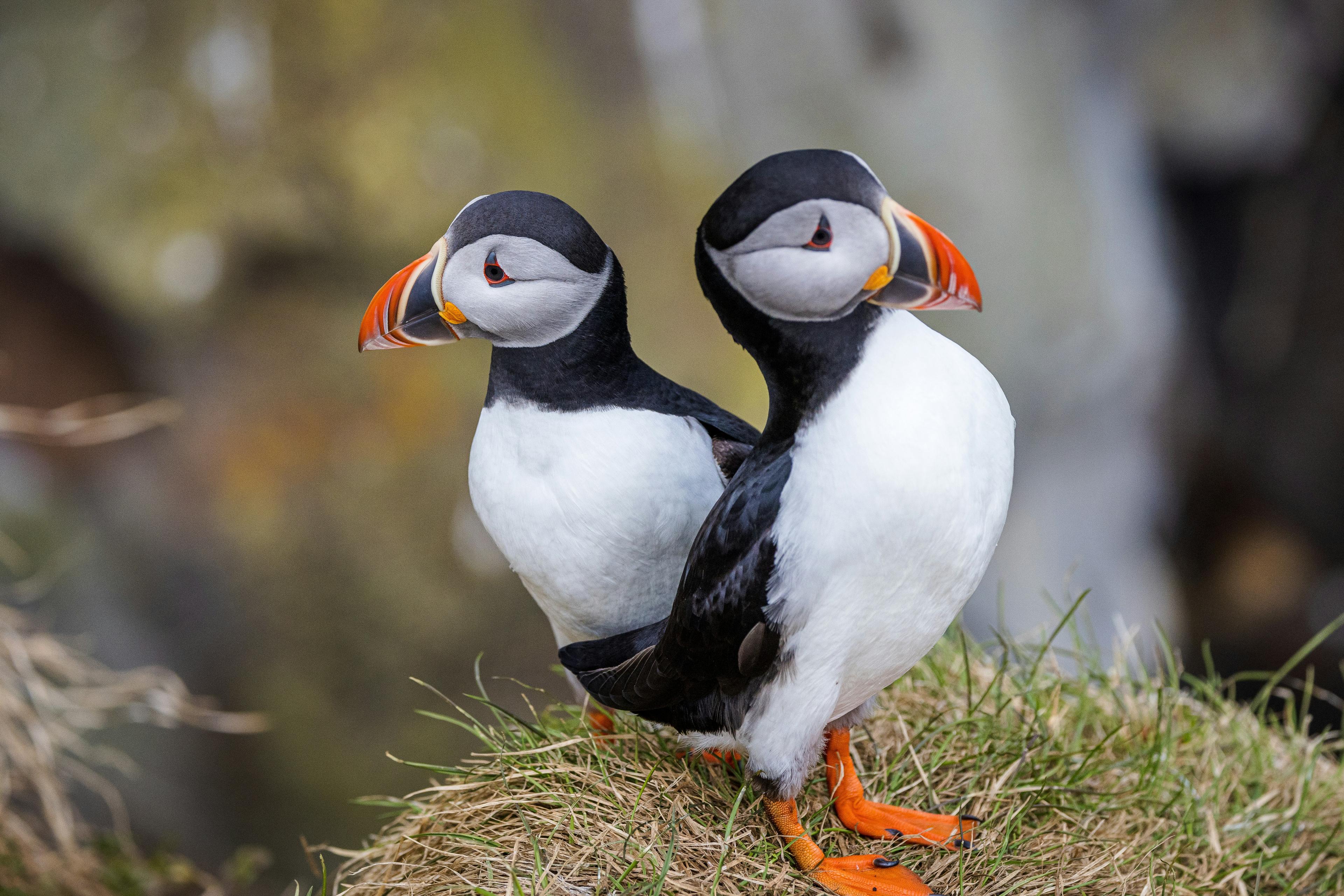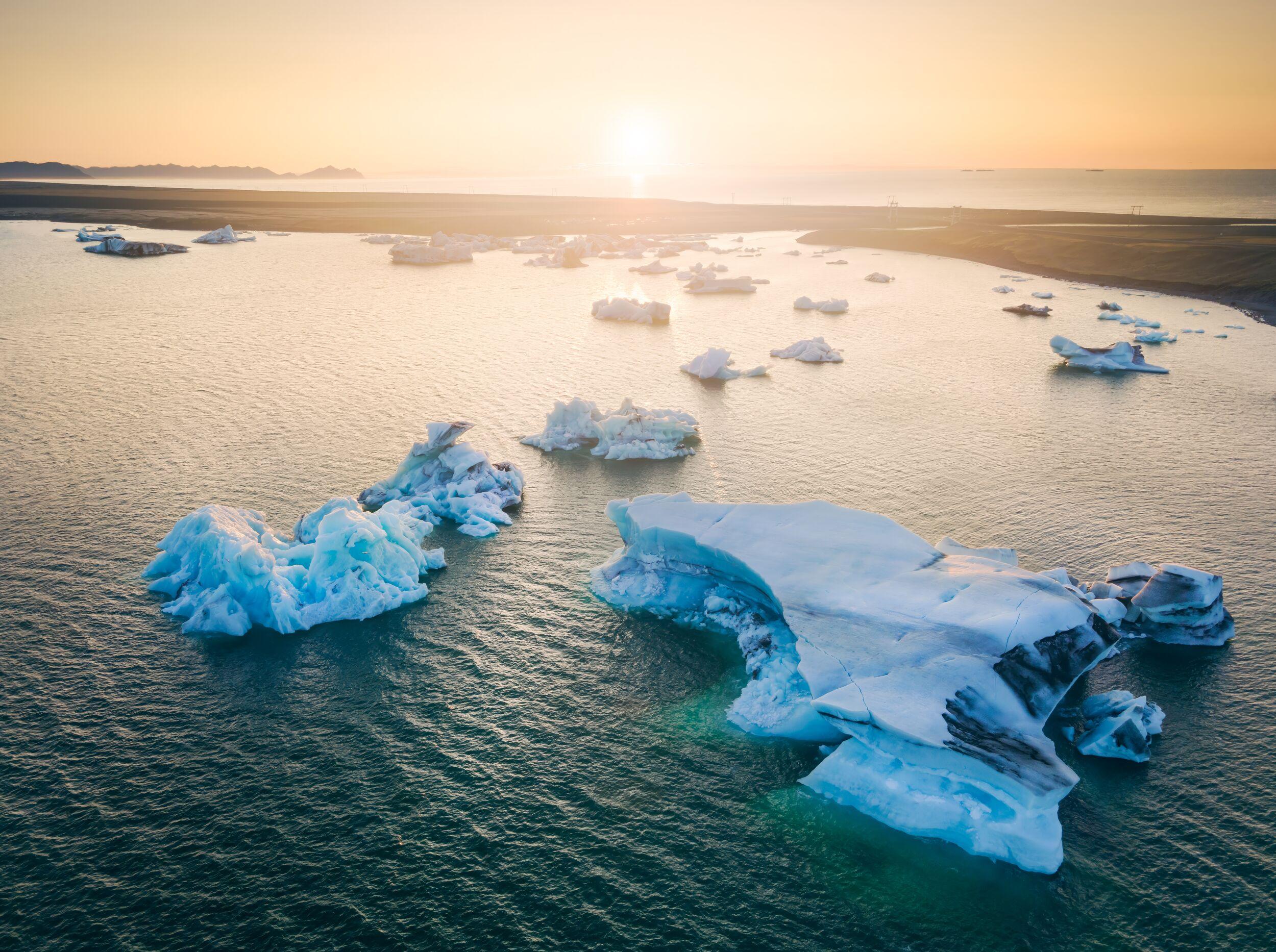Discover Iceland: Top Activities and Attractions for Every Traveller
Table of Contents
Do you have a passion for the landscape and feel at home in nature’s wildest places? A sense of adventure, seeking every opportunity for adrenaline-fuelled thrills? A love of culture and history, keen to learn the backstory of the places you visit? A need to relax, unwind and make time to recharge your batteries? If you’ve answered yes to any or all of these, then Iceland is for you.
With a wealth of visitor attractions, places to visit, and things to do that suit any interests, let’s discover Iceland together as we showcase the diversity of Iceland activities on offer.
Things to Do in Iceland: Culture, Nature and Landscapes
Iceland’s extraordinary scenery is a huge part of its appeal to travellers. Together with the glaciers that shroud them, the country’s many active and dormant volcanoes have sculpted and reshaped the landscape.
Ancient – and recent – lava flows leave an indelible mark on flood plains and valleys. Ash and ice contrast starkly and beautifully in the country’s ice caves, while in tranquil lagoons icebergs calve and bob about while bystanders look on in awe.
In places, the earth’s crust splits apart for all to see, the raw and rugged terrain a reminder of the immense power of the forces that shape our planet. Across the country, geothermal activity creates steaming fumaroles, plopping mud pools and jaw-dropping geyser activity. This same heat is harnessed for electricity and is used to fill the many geothermal spas and hot pools for which Iceland has become famous.
Along Iceland’s magnificent coastline, black sand beaches backed by towering basalt caves compete for attention with craggy stacks and gnarly wave-cut arches. Its fjords rise majestically from sheltered waters where whales, dolphins and seals sometimes venture, as an array of seabirds make their home in the vertiginous cliffs that drop right to the water’s edge where they’re battered by Atlantic breakers.
Yet there’s a peacefulness and magical quality too, most evident in the ethereal Northern Lights that dance across the heavens and in the tales of the huldufólk who live parallel lives with their human neighbours. Visitors will be left in no doubt that this is a landscape that’s still in transition and they are merely witnessing the latest chapter in Iceland’s long and evolving story.
And in Iceland’s towns and cities, some of what’s gone before is the focus of engaging museum collections that cover topics as varied as witchcraft, whales and wild Vikings. Cosy cafés are the ideal place to sip coffee while sampling traditional Icelandic food at its restaurants and street carts is another foodie pleasure.
If you’re keen to be a part of it, too, let’s look at some of the things to do in Iceland during your stay. Our carbon-neutral tours cover a wide range of places and activities.
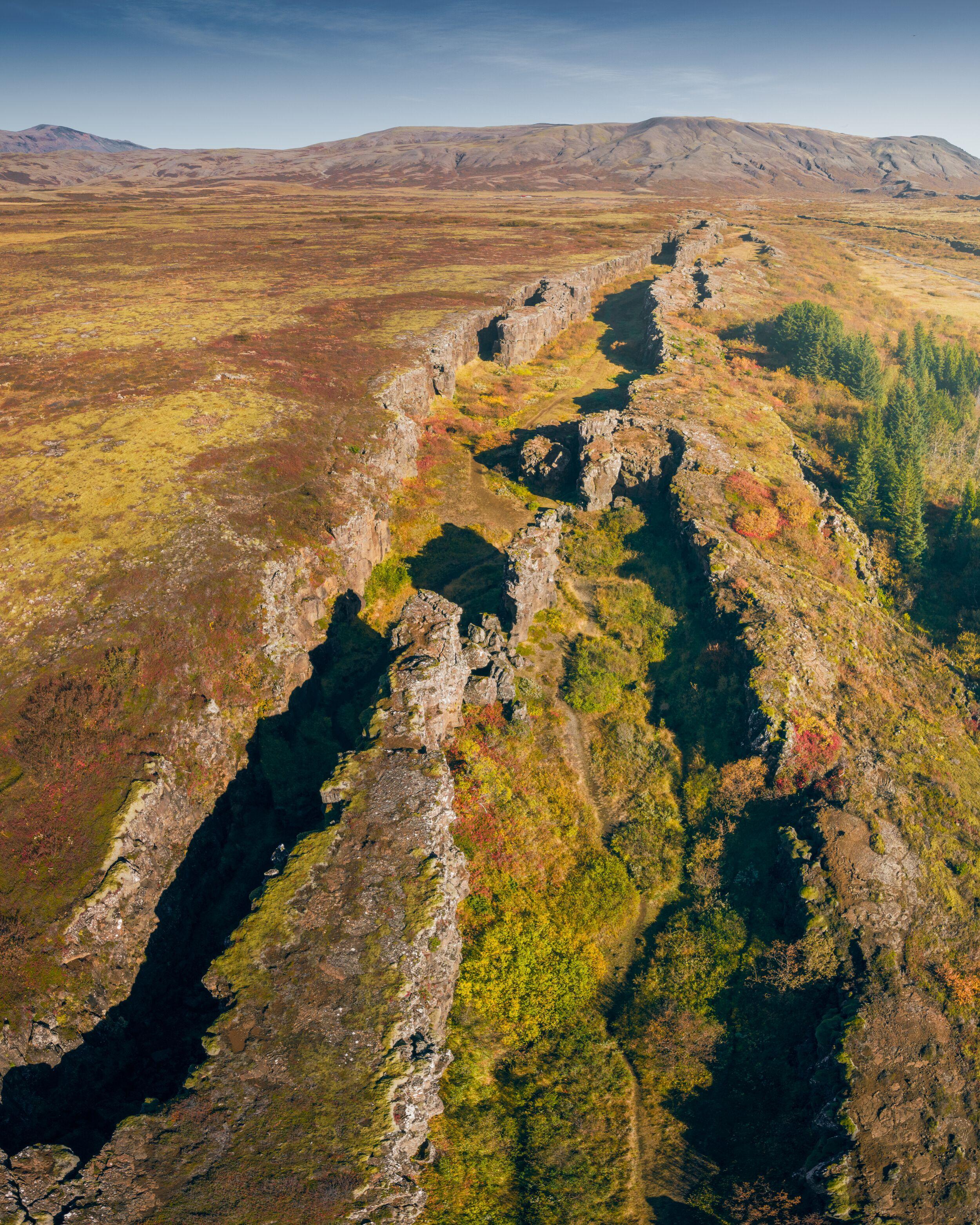
Iceland offers a world of wonders. There's something extraordinary for everyone to discover.
Captivating Nature Sightseeing Tours
Many of the best places to visit in Iceland lie within easy reach of Reykjavik. The tours on offer take the stress out of sightseeing, taking you to some of the country’s most beautiful spots.
The Golden Circle
In Iceland, sightseeing doesn’t begin and end with the Golden Circle but it should certainly form part of your plans. Basic tours comprise the three main attractions: Thingvellir National Park, Geysir Geothermal Area and Gullfoss waterfall, while add-ons such as lunch in Friðheimar’s tomato greenhouse or outdoor activities such as horse riding or snowmobiling are also recommended.
The South Coast
After the Golden Circle, the South Coast is one of the most sought-after by tourists keen to see the Icelandic countryside. It boasts towering waterfalls such as Seljalandsfoss, Skógafoss and Svartifoss.
Check out the black sand beaches and striking coastal features near Vik or exquisite glacial lagoons like Jökulsárlón and Fjallsárlón that have the wow factor in spades. With detours possible to the Westman Islands and, in summer, the Highlands, this is one part of the country you won’t want to miss.
The Snæfellsnes Peninsula
West Iceland is easily reachable from the capital and offers a wealth of wildlife-spotting opportunities and remarkable landscapes. Our Wonders of Snæfellsnes National Park small group tour is an easy way of seeing the peninsula’s highlights, including landmarks such as Kirkjufell (Church Mountain) and the fabulous coastal landforms close to Arnastapi and Hellnar. Snæfellsjökull, Djúpalónssandur Beach and Ytri Tunga will also make lasting impressions.
Super Jeep Tours
If you’re keen to get off the beaten track, consider one of our super jeep tours. These high-clearance vehicles have been specially modified so that they are capable of handling even the most uneven terrain and challenging water crossings.
Because of this, they’re ideal if you’re keen to get up into the , access remoter areas of Iceland’s glaciers or venture through some of West Iceland’s most incredible scenery. We’re confident our super jeep tours to Landmannalaugar and Þórsmörk will leave you open-mouthed in wonder at Iceland’s natural beauty.
Just beyond Iceland's capital, within a day's reach, lies a myriad of natural wonders—where waterfalls, glaciers, and volcanic landscapes come alive in their breathtaking beauty.
A Plethora of Hiking Opportunities
Accessing Iceland’s attractions can be as simple as lacing up your boots and taking a walk. The countryside boasts a network of enticing trails that are waiting to be explored, from easy strolls to challenging multi-day hikes.
Guided day hikes
Hiking in Iceland doesn’t have to be daunting. Nevertheless, ease any fears of getting lost by signing up for a guided hike and you’ll have someone on hand to add context to the landscape around you.
Accessible paths lead alongside many of Iceland’s waterfalls, while the unspoilt coastline of Snæfellsnes Peninsula is another popular choice for casual hikers. More challenging though still doable in a single day are guided summit hikes to Snæfellsjökull and to Iceland’s highest peak, Hvannadalshnúkur
Multi-day Hikes
Take hiking in Iceland to the extreme as you embark on a multi-day hike through spectacular surroundings. Two of the most rewarding are often combined into one tour.
Laugavegur connects the mountainous, geothermal area of Landmannalaugar with Þórsmörk, a green oasis boasting lush vegetation and birch forests. From there, the Fimmvörðuháls trail continues south to the top of Skógafoss waterfall overlooking the south coast.
With other long-distance routes on offer elsewhere in the country, such as the Westfjords and East Iceland, the only limits will be your own level of fitness and stamina.
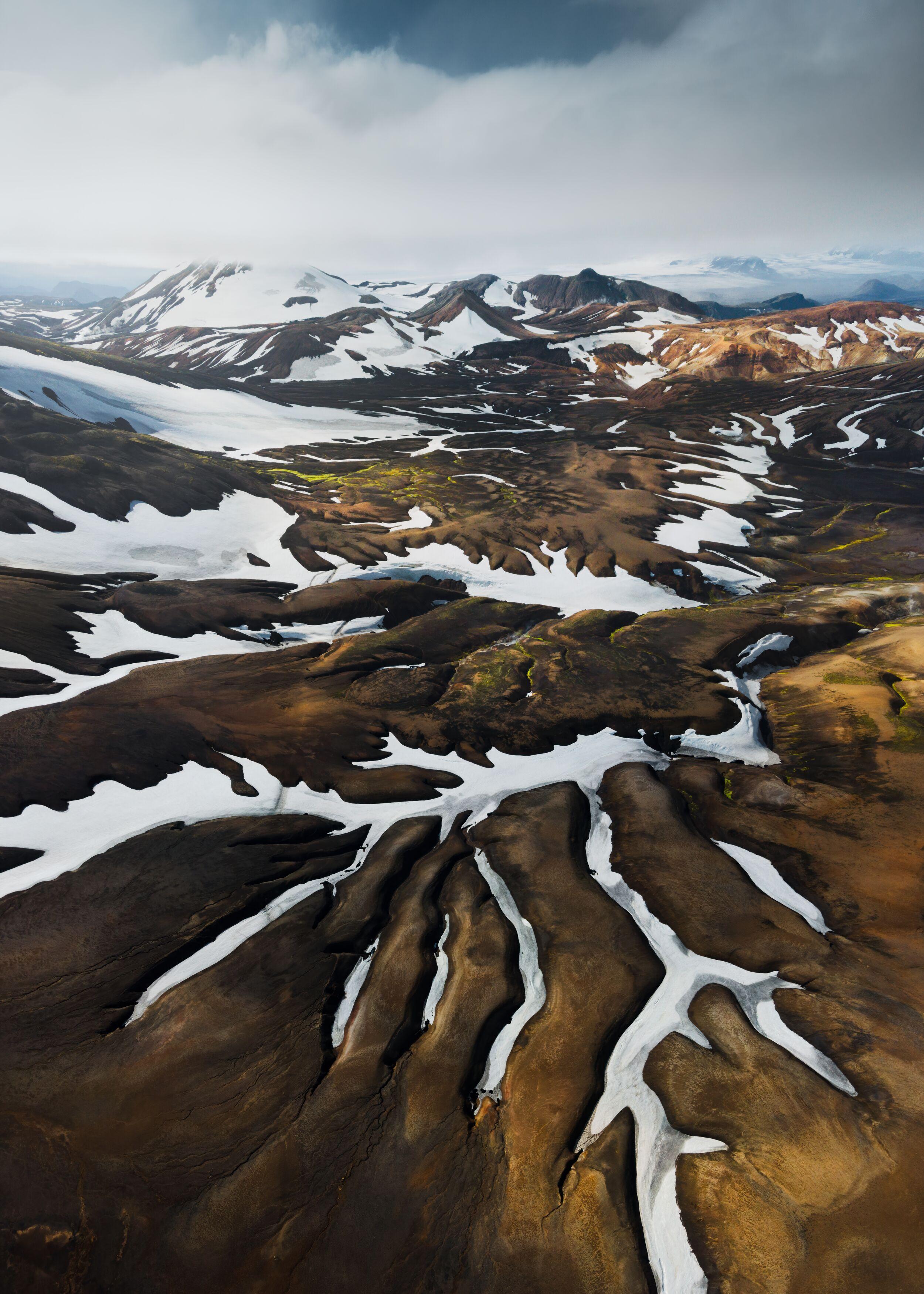
The Laugevegur & Fimmvörduháls trail was listed among the Top 25 hikes in the world by National Geographic
Other Adventurous Pursuits
Adrenaline junkies will be delighted to learn that they are well catered for in Iceland, with a host of adventurous pursuits designed to plaster a grin across your face and give you a different perspective on the extraordinary landscape.
Glacier Hikes and Ice Cave Tours
Seize the chance to walk across a glacier’s surface on one of our glacier hiking tours. Such environments are unsafe to explore alone, risky places with deep crevasses and well-like holes called moulins – often camouflaged under a layer of snow. Instead, place your trust in an experienced local guide who will teach you about the ice as you move around.
Tours explore some of the most scenic parts of the Sólheimajökull Glacier or the Vatnajökull Glacier further east. They can also be combined with visiting an ice cave, whose dimpled, translucent blue ice is mesmerising.
ATV and buggy adventures
All-terrain vehicle tours are a fun and thrilling option if you’re keen to get out into the Icelandic countryside. Conquer rough dirt tracks, traverse black sand beaches and set eyes on a long-abandoned wrecked plane as you ride with a local guide.
Similarly exhilarating are our buggy tours that get you up onto Mýrdalsjökull glacier and, within it. Some tours combine this activity with sightseeing along Iceland’s beautiful South Coast, where you can admire Seljalandsfoss and Skógafoss waterfalls. In this article, we shared some important knowledge about off-road driving and ATV tours in Iceland.
Diving and snorkelling
Frigid water might not seem like an obvious choice for first-time snorkelers and new divers, but don a dry suit and discover why Silfra Fissure is one of the most sought-after diving and snorkeling locations in the world. This underground chasm, with its crystal-clear water, offers exceptional visibility.
It offers the chance for divers and snorkellers to view Iceland’s plate boundary, where the North American and Eurasian plates meet, from a totally different angle. As it’s located within Thingvellir National Park, our tours include transfers from downtown Reykjavík with departures year-round.
Horseback Riding
Icelandic horses are a distinct breed, protected by strict import legislation and tightly controlled breeding practices. These sturdy horses have a calm temperament, making them ideal for everyone, even novice riders and children.
Ride out into the Icelandic countryside to experience what it’s like to tölt, a unique fifth gait that’s fast yet smooth. This horse riding tour also includes sightseeing around the Golden Circle, making this an unmissable day out.
Kayaking
In Iceland, adventure tours can sometimes be a little more leisurely, and that’s certainly the case if you opt for a kayaking trip. The Sólheimajökull glacier lagoon is the setting for our glacier kayak activity, which can be packaged up with South Coast sightseeing.
As your kayak slips silently through the calm water of the lagoon, you’ll appreciate the immense scale of the glacier as it dwarfs you and your fellow paddlers.
Ziplining
Fly through the air on a fun ziplining experience. Safely attired with a harness and helmet, you’ll soar above beautiful Svartagljúfur close to the town of Hveragerði in South Iceland.
Get a bird’s eye perspective on this fabulous gorge and its waterfalls in the safe hands of MegaZipline Iceland. Our tours include a transfer from Reykjavik, making it easy to slot this itinerary into your Iceland itinerary.
Skiing
Iceland has long been overlooked as a ski destination, but that’s a pity. The Tröllaskagi Peninsula in North Iceland has reliable snowfall and a range of slopessuited to intermediate and advanced skiers.
Our six-day ski tour in late winter and spring offers you the chance to explore these off-the-beaten-track slopes, many of which overlook the ocean and the fjord. Hike up to enjoy the rush of sliding over untracked powder as you descend untouched slopes.
Relax in Geothermal Lagoons
Relaxing in one of Iceland’s many geothermal baths is a regular activity for locals, and it’s not hard to understand why. From luxurious, stylish spas to rustic fjordside hot pots and even a geothermal river, you’ll find a place to match your vibe.
The Blue Lagoon
Of all Iceland’s geothermal baths, this is the most famous. The Blue Lagoon has been a fixture on the Reykjanes landscape for over three decades. Its mineral-rich aqua water has a milky quality, the perfect foil for the craggy lava that surrounds it.
The on-site spa offers a range of pampering treatments, from massages to facials. Best of all, its position midway between Reykjavik and Keflavik Airport means it makes a great first or last stop on your itinerary. It’s practical, too: accessed by shuttle buses, it has luggage storage, lockers, fluffy towels, and hairdryers.
Sky Lagoon
Conveniently located close to downtown Reykjavik, this upscale spa has rapidly become a visitor favourite. Styled amid lava cliffs, the infinity edge pool at Sky Lagoon overlooks the water, accentuating the sense of calm. Its swim-up bar ensures that this is a convivial space, ideal for couples or groups of friends to unwind.
The place is also known for its seven-step ritual. Guests enjoy a variety of complementary treatments, including salt scrubs and steam baths, to leave their skin feeling soft and cleansed.
Laugarvatn Fontana
Laugarvatn Fontana is located within the Golden Circle (the ideal add-on to a guided tour) and perches on the edge of Lake Laugarvatn. Bathers can relax in the geothermally heated water before taking an energising dip in the much cooler waters of the lake.
Laugarvatn Fontana will also interest foodies i its geothermal bakery. Tins of rye bread are buried in the hot sand and left to cook slowly over a 24-hour period. Tour participants get to sample the delicious end result topped with smoked lake trout.
Hvammsvik Hot Springs
Hvammsvik Hot Springs lie slightly off the beaten track beside Hvalfjörður (Whale Fjord). Opened in 2022, they’re luring in-the-know visitors to a forgotten fjord that’s been overlooked since the Hvalfjörður Tunnel was built in 1998 enabling drivers to take a short cut under the water on this stretch of the country’s ring road.
Effortless rustic chic ensures these baths complement their natural surroundings, making them well worth the detour no matter what time of year you’re visiting.
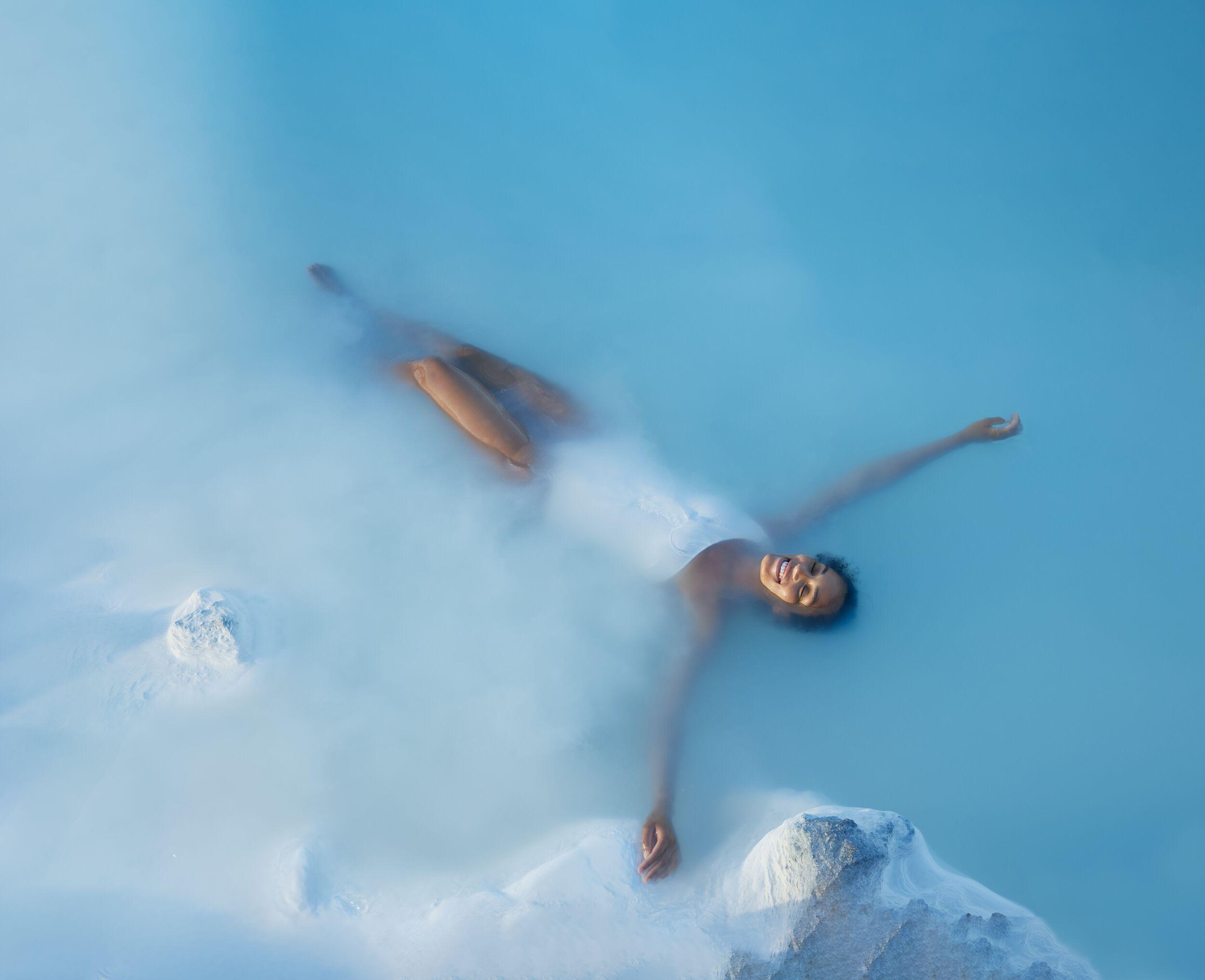
In the past seven years, Iceland has expanded its bathing culture with at least five new hot spring baths, each offering unique geothermal experiences. With murmurs of more openings on the horizon, Iceland's tradition of communal relaxation through hot springs continues to thrive and grow.
Iceland's bathing culture is deeply rooted in the nation's history, with geothermal pools and hot springs serving as communal gathering places for relaxation, socializing, and even healing. The tradition of soaking in natural hot waters is not just a pastime but a vital part of Icelandic identity and well-being.
The Best Indoor Attractions in Reykjavik
Iceland’s changeable weather means that you’ll sometimes want to be inside, even with the scenery that is remarkable. A wealth of visitor attractions means you’ll never be short of ideas for something to do indoors, especially handy in winter.
Reykjavik, for instance, makes use of the Hop On, Hop Off sightseeing bus to get to its museums and more. Your ticket is valid for 24 or 48 hours.
Stops include Harpa Concert Hall on the waterfront, where concerts and performances take place within an architecturally magnificent building. This area is also home to Reykjavík Maritime Museum, Whales of Iceland, the Lava Show and Flyover Iceland, as well as being convenient if you’re embarking on a whale-watching tour from the Old Harbour.
Elsewhere in the capital, alight for a spot of souvenir shopping on Laugavegur or ride the elevator to the viewing platform of Hallgrímskirkja, Reykjavik’s most iconic church.
The Hop On, Hop Off bus also gets you over to Perlan, where its Wonders of Iceland exhibits showcase the awesome nature of the country’s volcanoes, glaciers and more in an interactive way. Historic Höfði House, site of the 1986 Reagan-Gorbachev summit, is another must-see.
What to Do After Dark
In summer, daylight stretches into the night, but the darkness encroaches more readily in mid-winter. Reykjavik’s nightlife is lively and vibrant, but arguably, the best way to spend an evening is on a hunt for the Aurora Borealis.
City Nightlife
Reykjavik’s a small capital in comparison to some, but it punches well above its weight when it comes to nightlife. Begin your evening at one of the city’s characterful food halls before kicking on to lively bars in time for happy hour.
Dance the night away at trendy clubs with live DJs; meanwhile, thriving live music venues prove that the Icelandic music scene is flourishing. If you’re hoping to round off your day in a more understated way, the city’s rooftop bars tempt with stellar views; try The ROOF at EDITION, SKÝ Bar from Center Hotels or Petersen svitan.
Northern Lights tours
Iceland’s Northern Lights tours are a big factor in luring winter visitors to the country. From late August to mid April, the nights are dark enough to ensure that you’ll be able to see the magical aurora borealis if it makes an appearance.
Guided tours take the guesswork out of your Northern Lights hunt. They allow you to tap into local knowledge about where the chances of seeing them are greatest. Leaving someone else to take care of the driving is another bonus: gaze out of the window instead and scour the sky for those telltale green ribbons.
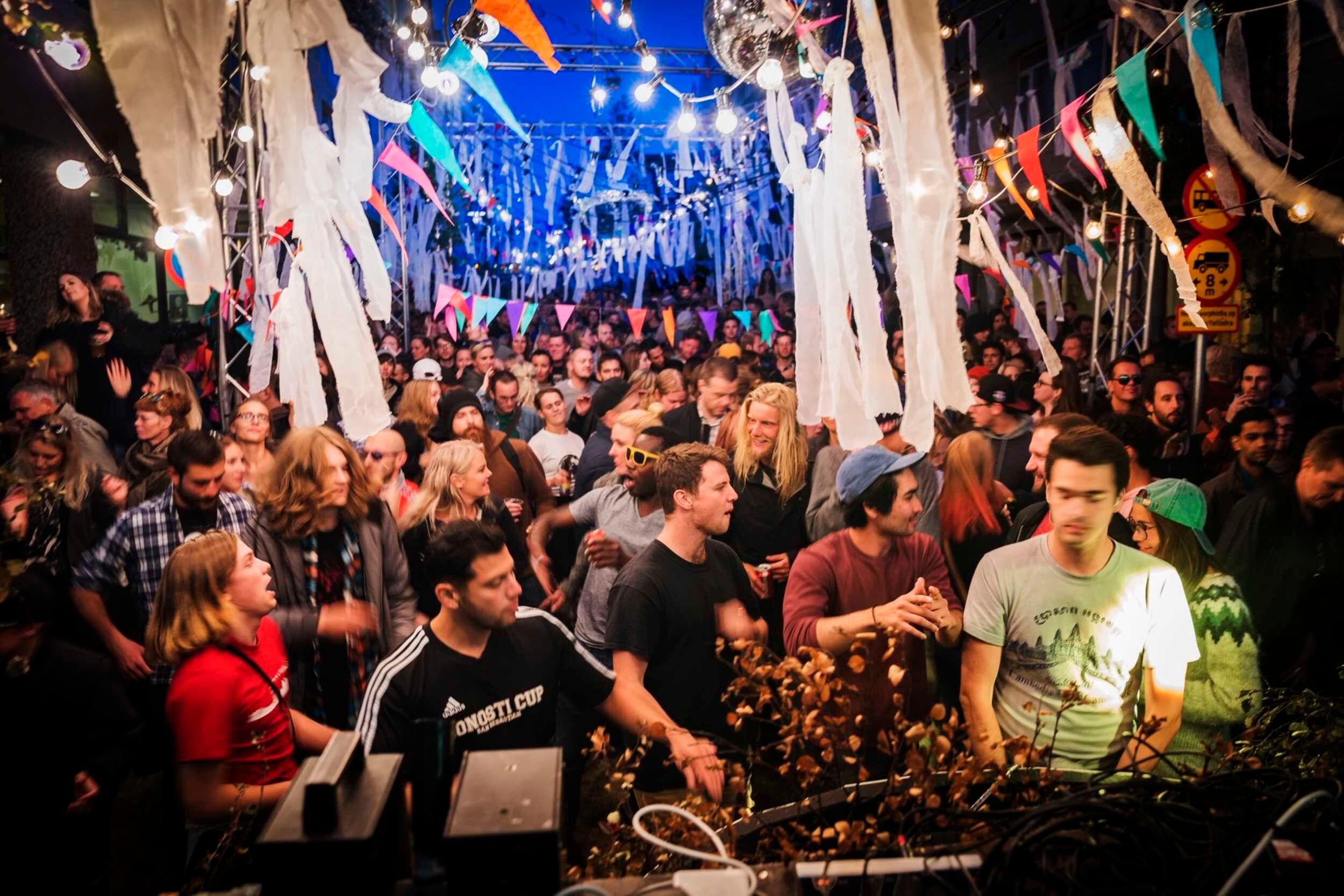
Reykjavík boasts a vibrant nightlife and music scene, with lively bars, clubs, and renowned festivals like Iceland Airwaves, making it a hotspot for both local and international music enthusiasts.
However you choose to spend your time in Iceland, and whatever time of year you visit, there’s no end to the possibilities. Why not browse our wide range of tours, activities and attractions to see which take your fancy?
Questions and Answers about Activities in Iceland
When it comes to food, Iceland is known as a surprising and adventurous destination.
Perhaps the most famous is the divisive kæstur hákarl, or fermented shark. It’s made of Greenland shark that’s cured and left to dry. The taste is pretty unique!
Otherwise, Iceland has a rich culinary tradition, full of dishes that are different to what you likely eat at home. Icelandic hotdogs, smoked lamb’s head, and seafood are all Icelandic classics. Don’t forget to try them when you visit!
The cheapest months in Iceland are those in the shoulder seasons, namely spring and autumn. Visiting in March and April, or October and November, tend to offer better travel deals.
While you may see cheaper prices for hotels and tours, that’s not always the case. However, you are likely to see greater availability, and you may often feel like you have the attractions to yourself!
The winter months are the best time to see the northern lights. This is when the nights are longest and when the aurora borealis tends to be the brightest as a result.
However, you don’t need to come in the depths of winter—like December or January—to see them. Northern lights season typically runs from October through to April.
Travel is an opportunity to discover the unexpected and to see things you’ve never seen before. The beauty of it is that every journey is different, and you may well uncover places that few other people know about.
Join our sightseeing tours to get off the beaten track and make your own adventure. Who knows what you’ll discover!
Probably the most scenic drive in Iceland is the tour of the so-called “Ring Road”. This is Route 1, the circular road that runs around almost the entirety of Iceland. To drive from Reykjavík along this route is an unforgettable way to see the country.
You can enjoy the drive over a matter of days, a week, or even longer. However many days you have in Iceland, there are few better ways to spend them!
Your budget for Iceland will depend on your travel preferences and what you want to get up to. For example, you can spend anything between €30 and €500 a night for accommodation. And, depending on whether you want to hire a car, join a tour, or only do free activities, this will affect your budget too.
Something important to know is that you don’t have to bring any cash at all. Pretty much everywhere in Iceland accepts card payments, so don’t worry about getting Icelandic money in advance.
A visit to Iceland is a memorable and rewarding trip no matter how long you have to spend here.
If you have just a long weekend to spare, you can enjoy an action-packed few days seeing the best sights in and around Reykjavík. Or if you have a week—or even longer—you’ll have the time to take it easy and see the country at your leisure.
There’s always something more to do, so if you have the time, stay even longer still!
It’s not easy to call which is the single top attraction in Iceland. There are so many popular destinations to choose from!
Perhaps the most visited natural sites are those on the Golden Circle. This is a spectacular travel itinerary through Iceland’s most marvellous scenery and fascinating history.
There are three main destinations on the route. Gullfoss waterfall is a mighty waterfall with a torrent that thunders down from the Langjökull glacier. Then, Geysir amazes with its stunning bursts of water.
The third sight on the route is Þingvellir National Park, a vast landscape that was home to Iceland’s first parliament, many centuries ago.
Every month is a great month to go to Iceland. The best month for you will depend entirely on what you want to get up to.
For example, do you want to see the northern lights? In that case, the winter is your best option, when the nights are at their darkest. Prefer to go hiking in the highlands? Then the summer is a better idea, as the snows will have melted, allowing easier access.
Alternatively, if you prefer to come for cultural events, check out Iceland’s busy events calendar before travelling. For example, Christmas is a very special time, but festivals like Iceland Airwaves or the Reykjavík International Film Festival are incredible too.
Among the many things that Iceland is known for, the most famous are likely volcanoes, glaciers, and the northern lights.
Our country is known as the Land of Ice and Fire for a reason. Over a tenth of Iceland’s land surface is covered in ice, while there are over 30 active volcano systems too. The volcanoes include the famous Eyjafjallajökull, which halted international air travel for days back in 2010.
No winter visit to Iceland is complete without a hunt for the northern lights though. As Iceland is so far north (Reykjavík is the most northerly capital city in the world!), the aurora borealis is a regular occurrence throughout the colder season.
There are many popular tourist attractions in Iceland, including natural wonders, fascinating science museums, and cultural destinations.
Probably the single most popular attraction is the Blue Lagoon. Recognised as a completely unique spa destination, with famed therapeutic properties, it’s a must see for anyone visiting Iceland.
Check out more attractions on our sightseeing tours in Iceland.
The Reykjavík area is where you will find the most visitor attractions in Iceland. This is the capital city after all, with museums, galleries, and cultural treats. But it also sits in a region rich with natural beauty, dramatic sights, and geological treasures.
Firstly, the Reykjavík area is very close to the Golden Circle, the famed travel itinerary. But it’s also just a stone’s throw from the Reykjanes UNESCO geopark and the splendid Snæfellsnes peninsula.
The whole of the south coast is close by too. With waterfalls, black-sand beaches, and glacial lagoons, it’s a region packed full of wonders.
Iceland has grown in popularity as a tourist destination over the past decade. While its exact ranking can vary based on different metrics, it's often recognized for its sustainable tourism practices and is among the top destinations for nature and adventure tourism globally.
Guided tours in Iceland are highly recommended, especially for first-time visitors. Not only do they provide valuable insights into the history, culture, and geology of the region, but they also ensure safe navigation through some of Iceland's challenging terrains. Additionally, local guides often know hidden gems and can enhance the overall experience.
Yes, Iceland is an adventurer's paradise. With its diverse landscapes that include volcanoes, geysers, glaciers, and waterfalls, it offers a plethora of adventure activities. Whether you're into hiking, glacier climbing, snowmobiling, ATV or Buggy driving across wild landscapes, or diving between tectonic plates, Iceland has it all!
Iceland, a land of stark contrasts and otherworldly landscapes, is home to some truly unique activities. Here are some of the most unusual things you can do:
- ATV or Buggy Driving to Sólheimasandur Aeroplane Wreckage: Traverse the black sand beaches to visit the haunting remains of an abandoned airplane.
- Snorkelling Between Tectonic Plates: At Silfra fissure, dive into cold, crystalline waters and float between the North American and Eurasian tectonic plates. It's not just any snorkelling experience – it's a journey between continents!
- Snowmobiling on a Volcano: Glide across the icy surface of a glacier that sits atop a volcano. As you rev up the snowmobile, you're not just traversing ice; you're riding over volcanic fire waiting beneath.
- Descent into a Glacial Crevasse: Experience the thrill of rappelling down into the depths of a glacial crevasse. This adventure isn't for the faint of heart, but the views within the blue-hued ice caverns are unparalleled.
- Trekking Europe's Largest Wilderness: Venture across the highlands, which are often considered Europe's last true wilderness. This vast, uninhabited expanse offers trekkers a chance to truly disconnect and immerse in raw nature.
- Embarking on a Glacial Expedition: For those seeking an extreme adventure, take on the challenge of a hard-core glacial expedition. Navigate crevasses, camp under the northern lights, and experience the power of nature firsthand.
Each of these activities is more than just an adventure; they are unique experiences that let you connect deeply with Iceland's distinctive landscapes and phenomena.
Indeed, fo, Iceland is a playground for those who thirst for adventurere are some exhilarating adventure tour options:
- Buggy and ATV Tours: Navigate through the rugged terrains and lava fields, feeling the adrenaline rush as you explore off the beaten path.
- Diving and Snorkeling: Experience the Silfra fissure, where you can dive or snorkel between two continental plates in crystal clear glacier water.
- Horseback Riding: Roam the Icelandic landscapes on the back of the unique Icelandic horse, known for its special tölt gait.
- Glacier Hiking: Trek across some of Europe's largest glaciers, like Vatnajökull, and marvel at the captivating blue ice formations.
- Ice Climbing: Ascend frozen waterfalls or glacier fronts with picks and crampons, surrounded by breathtaking icy vistas.
- Ice Caving: Explore stunning blue ice caves that form naturally in glaciers during the winter months.
- Lava Caving: Delve into the underground wonders of Iceland by exploring caves formed by flowing lava.
- Hiking and Multiday Trekking: Traverse through Iceland's diverse landscapes, from the geothermal wonders of Landmannalaugar to the lush valleys of Þórsmörk.
- Glacier and Mountain Expeditions: Embark on multi-day journeys to some of Iceland's most remote glaciers and peaks.
- Ziplining: Experience the thrill of soaring over canyons, rivers, or lava fields on ziplines.
- Paragliding: Glide over the Icelandic landscapes, getting a bird's-eye view of its stunning topography.
- Kayaking: Paddle through serene fjords or around dramatic icebergs in glacial lagoons.
- Sailing: Sail around Iceland's rugged coastlines, spotting seabird colonies and occasionally whales.
- Skiing: Enjoy backcountry skiing in the Westfjords or downhill skiing in areas like Akureyri, reveling in the untouched snowy landscapes.
With such an array of adventure tours, Iceland promises a fun-filled, action-packed experience for every kind of thrill-seeker.
Iceland's geologically young and dynamic terrain makes it ideal for adventure tourism. The country offers a unique blend of fiery volcanic activity and icy glacial expanses. Its remote fjords, vast lava fields, and rugged coastlines provide endless opportunities for exploration and thrill-seeking.
There are many hiking trails in Iceland, which all offer something different. While everyone might disagree on which one is the best, all these hiking areas promise an experience you’ll never forget.
Laugavegur is the most famous, offering multi-day and shorter trails across Iceland’s southern highlands. There's a good reason why it’s a favourite among locals and visitors alike!
Alternatively, the Vatnajökull National Park offers some incredible hikes, in an area known as the home of one of the largest glaciers in Europe. It’s so much more than that too, with Iceland’s highest mountain, lush nature, and breathtaking views.
The reality is, though, that wherever you go in Iceland, you’ll find some great hiking trails. Get your walking boots on and go exploring!
There is no charge to hike in Iceland. You can traverse any path or climb any hill without a guide, if you have the skills and experience to do so safely.
However, you should expect to pay a small fee if you want to camp or spend the night in an equipped mountain hut. Similarly, you should expect to pay for transport to and from the hiking areas.
At Icelandia, our hiking tours include transportation and accommodation costs, as well as an experienced guide and transport for any belongings you don’t want to carry yourself.
When hiking in Iceland, you should wear quality outdoor clothing, if you have it. We recommend breathable layers, a waterproof jacket and trousers, and sturdy walking boots. For the evenings, a hat, gloves, and warm socks are a good idea too.
Ultimately, your priority should be to stay warm and dry—even in the summer!
That depends how long you have to spare! With so much hiking on offer in Iceland, you could spend weeks linking up different trails and exploring the wilder parts of the country. In fact, many people do.
That said, if you’re looking for a single, memorable hiking experience, we recommend a multi-day route of about five days. This gives you the opportunity to get far off the beaten track and into some of Iceland’s remote areas.
Alternatively, you might be happy with just a day hike. We offer many of these experiences too.
Hiking to Fagradalsfjall can be safe for individuals who are reasonably fit and take necessary precautions. It's essential to be well-informed about the weather and current conditions, be adequately prepared, have the appropriate gear and clothing, and strictly adhere to guidelines.
Respecting closures, staying on designated trails, and avoiding hiking on solidified lava are also crucial for ensuring safety.
Hiking to Fagradalsfjall can be safe for individuals who are reasonably fit and take necessary precautions. It's essential to be well-informed about the weather and current conditions, be adequately prepared, have the appropriate gear and clothing, and strictly adhere to guidelines. Respecting closures, staying on designated trails, and avoiding hiking on solidified lava are also crucial for ensuring safety.
The accessibility of the volcano and its trails can fluctuate following each eruption and might even shift daily during active periods. Some trails can be quite extensive, reaching up to 20 km (approximately 12.4 miles), while others are shorter and more leisurely. It's crucial to obtain current information about any hiking trail in this region. Consult the safetravel.is website or join our Facebook group to discuss with locals about the latest conditions.
Ultimately, you will need to be reasonably fit to complete any hike in this area. You’ll also need sturdy boots, as you’ll be walking over rocky and unstable terrain. We discourage anyone from hiking here in the wintertime without local guidance.
The most famous hike in Iceland is probably the Laugavegur trail. Running from the lush oasis of Þórsmörk to the geothermal pools at Landmannalaugar, the route takes in some of the most magical, surprising, and downright awesome sights in the southern highlands.
It definitely deserves its fame. See multicoloured rhyolite hills and black-sand deserts, glaciers and canyons, and even a recently active volcano, Eyjafjallajökull.
Come and hike the Laugavegur trail for yourself. It’s an unforgettable experience.
The best season to hike in Iceland is the summer. This is when weather conditions are best and the snow has melted, allowing access to the remote parts of the highlands. At the same time, days are longer, giving you more hours of daylight in which to walk.
That’s not to say that you can’t join hiking tours in other parts of the year. You can. But routes might be more difficult and you may need experience on the snow.
Yes, you can see lava at Fagradalsfjall. The volcano erupted in 2021, 2022, and 2023, with each eruption lasting for a few weeks or months. Experts predict that Fagradalsfjall will continue its pattern of erupting on and off for the coming decades.
Depending on the timing of your visit, you might encounter an active eruption with flowing lava, or you might see recently solidified lava from past eruptions.
While witnessing active lava flows is undoubtedly mesmerising, exploring the freshly solidified lava fields is also a unique and awe-inspiring experience. There are guided tours available that specifically take visitors to these new and transforming landscapes.
The summer months—June, July, and August—are the best months to hike in Iceland. Travel is easier as most of the winter snows have melted and the terrain is a lot easier to walk on.
Of course, the weather is better too, giving you a better chance of clear skies, warmer temperatures, and long evenings of sunshine.
Iceland offers some of the world’s best hikes, crossing some of the world’s wildest landscapes. Every hike is a challenge in its own right, whether it involves long distance, steep ascents, or loose terrain.
On a hiking tour in Iceland, we offer routes of all levels of difficulty, to challenge every level of hiker.
The hike to the Fagradalsfjall volcano is a moderate route that requires sturdy shoes and a decent level of fitness. It covers 7 kilometres (4.4 miles) with an ascent of about 300 metres (990 feet).
The hike to the eruption site at Fagradalsfjall is 7 kilometres (4.4 miles) with an ascent of about 300 metres (990 feet). It’s also on loose ground, thanks to its location on a lava field.
While it can be a challenge, take it as slow as you need to and you’ll get there. It’s definitely worth the effort!
There are many opportunities for hiking in Iceland. From the world-famous Laugavegur trail to day routes in the country’s three national parks, you’ll be spoiled for choice. There’s a reason Iceland is known as an outdoor paradise!
That said, Iceland isn’t only about hiking. There’s a huge array of outdoor and adventure activities on offer, including diving, snowmobile riding, ice caving, wildlife watching, and more. They’re all different ways to see Iceland’s awesome landscape. It’s a place where there’s truly something for everyone.
Related Articles
See all articlesRecommended tours

South Coast Wonders
This carbon-neutral Iceland South Coast tour is perfect for nature lovers looking to explore Iceland’s top natural attractions in just one day. Visit the stunning Seljalandsfoss and Skógafoss waterfalls, walk along the famous Reynisfjara black sand beach, see the breathtaking Sólheimajökull glacier, and experience the charm of Vík village—and enjoy incredible landscapes along the way.
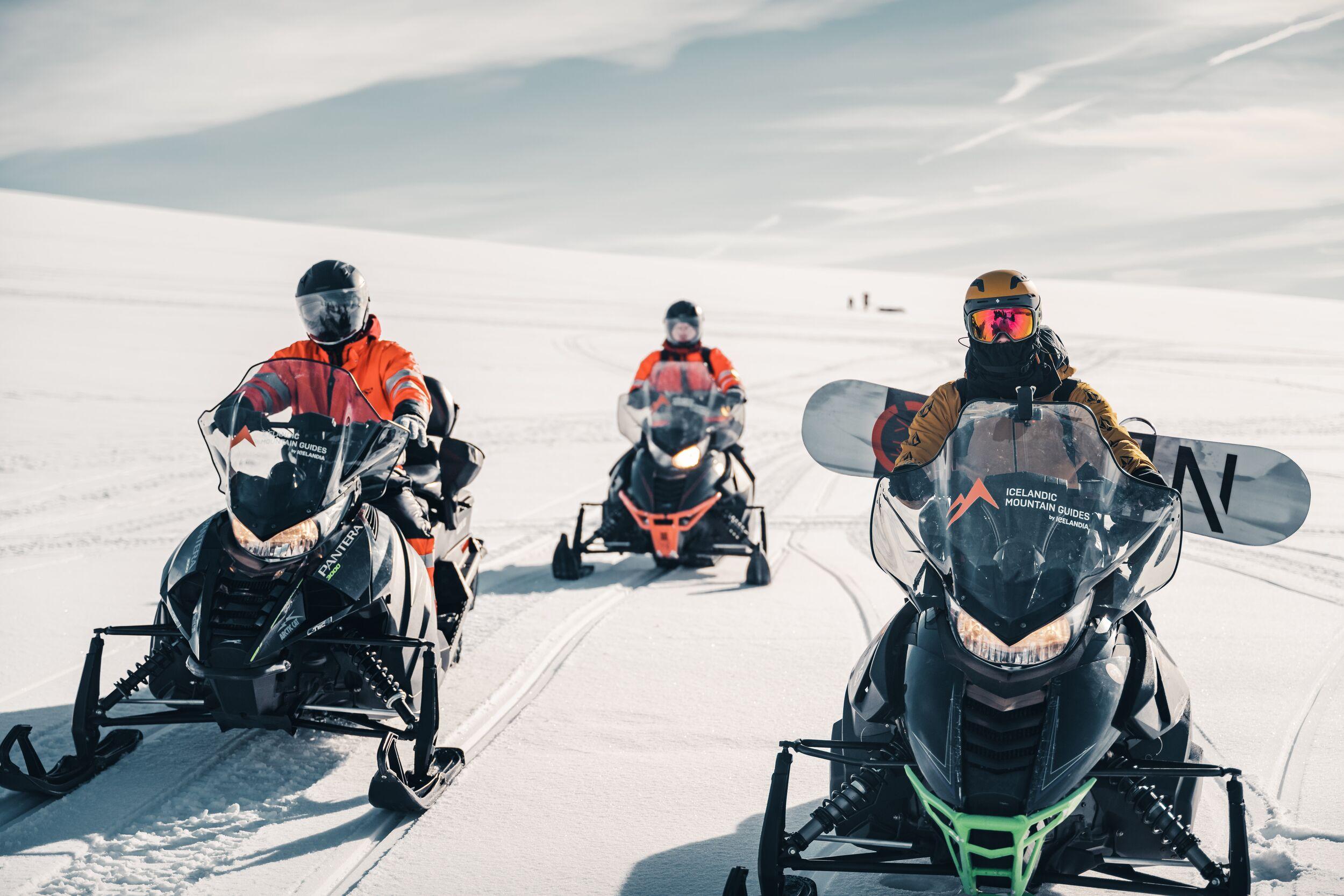
Golden Circle Super Jeep and Snowmobile Tour
Experience Iceland’s top attractions in an exciting way! Explore the famous Golden Circle in a luxury Super Jeep, then venture onto Langjökull, the country’s second-largest glacier, for an exhilarating snowmobile ride.
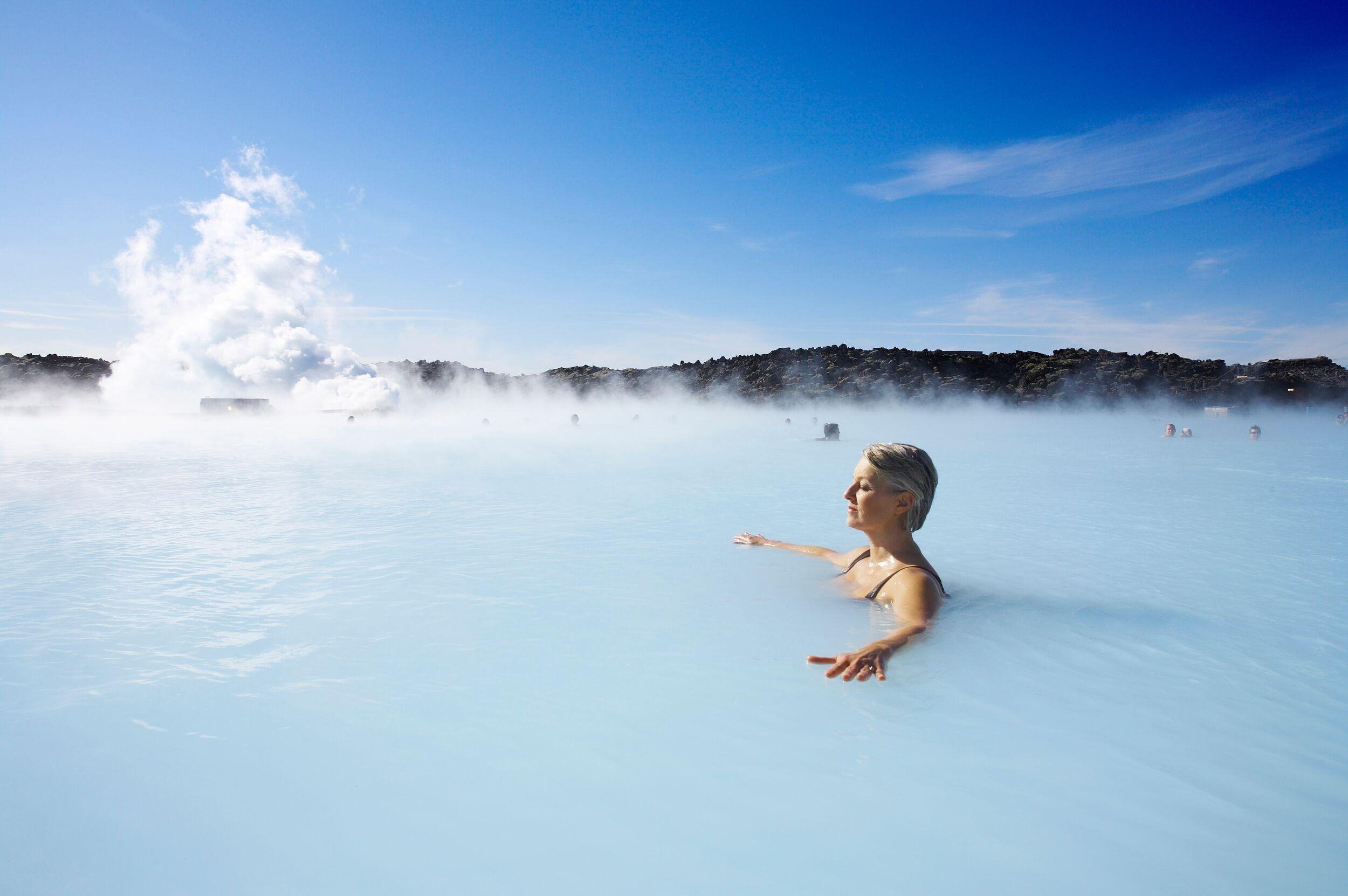
- Best seller
- Popular
Blue Lagoon & Northern Lights
Enjoy a perfect winter day in Iceland! Experience the best of Iceland with this package of two of the island’s most popular tours in one day! Soak in the milky blue healing water of the Blue Lagoon, which is one of Iceland's most famous tourist attractions and is considered by many to be a once-in-a-lifetime experience and an unmissable part of a visit to Iceland. After your return to Reykjavík, a guide will lead you on a search for the elusive northern lights! Watching the lights dance and flicker in the sky, changing shape and colour, is incredible. Prepare to be dazzled!
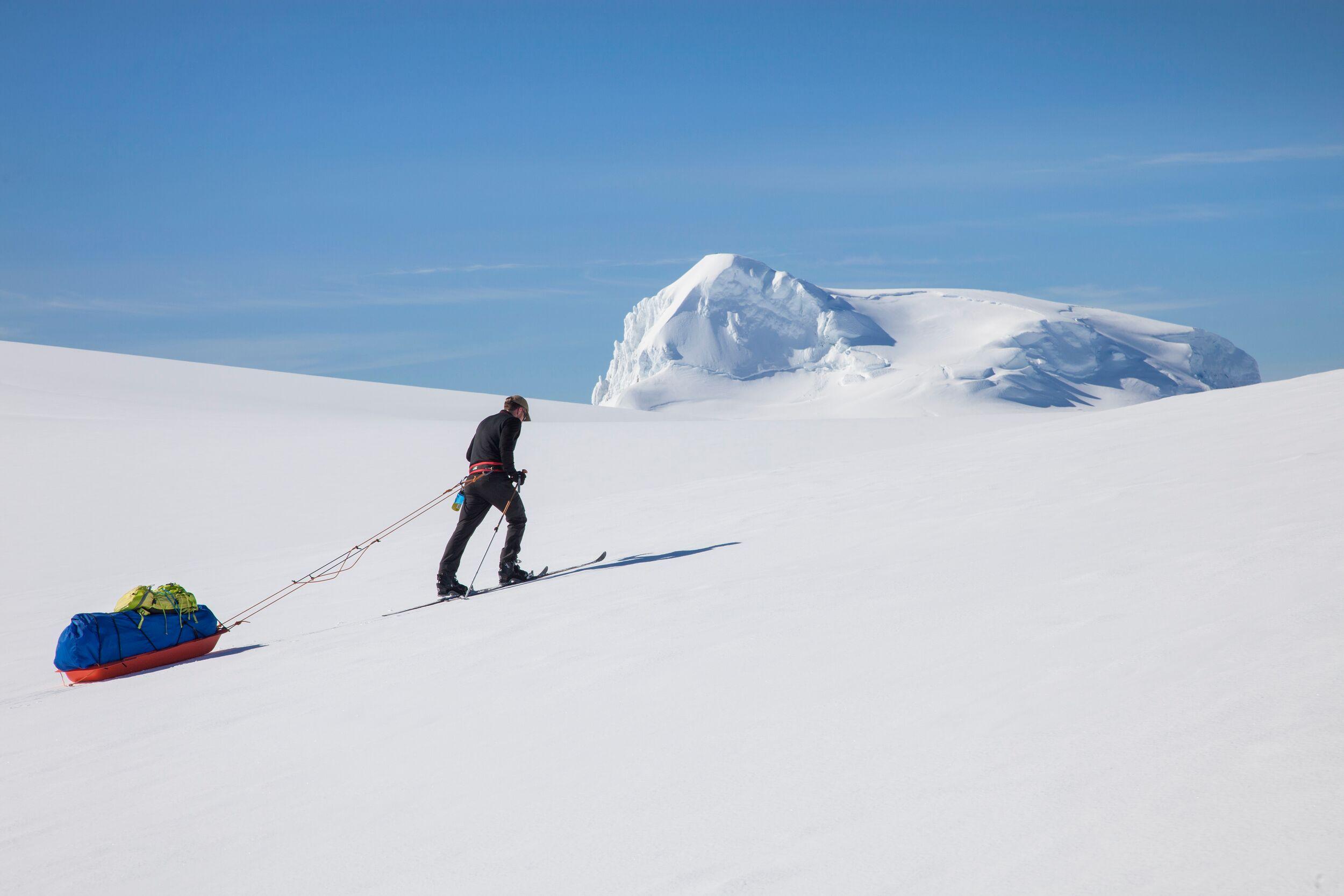
Vatnajökull Glacier Expedition
Cross the largest glacier in Europe during this perfect combination of adventure, stunning nature and physical challenge. This is a dream tour for outdoor enthusiasts! Crossing the mighty Vatnajökull ice cap should be on the list for every ambitious adventurer.

Highland Bus - Reykjavík to Landmannalaugar
The highlands are spectacular. If you’ve seen a picture of multi-coloured mountains in what seems to be a vast, remote wilderness in Iceland, it’s probably from Landmannalaugar. This region of Iceland is a hiker’s paradise, with hiking trails along rhyolite mountains, natural geothermal hot springs and wide-open spaces. If you are planning to hike Landmannalaugar and/or the Laugavegur Trail, leave the driving to us and hop on the highland bus!
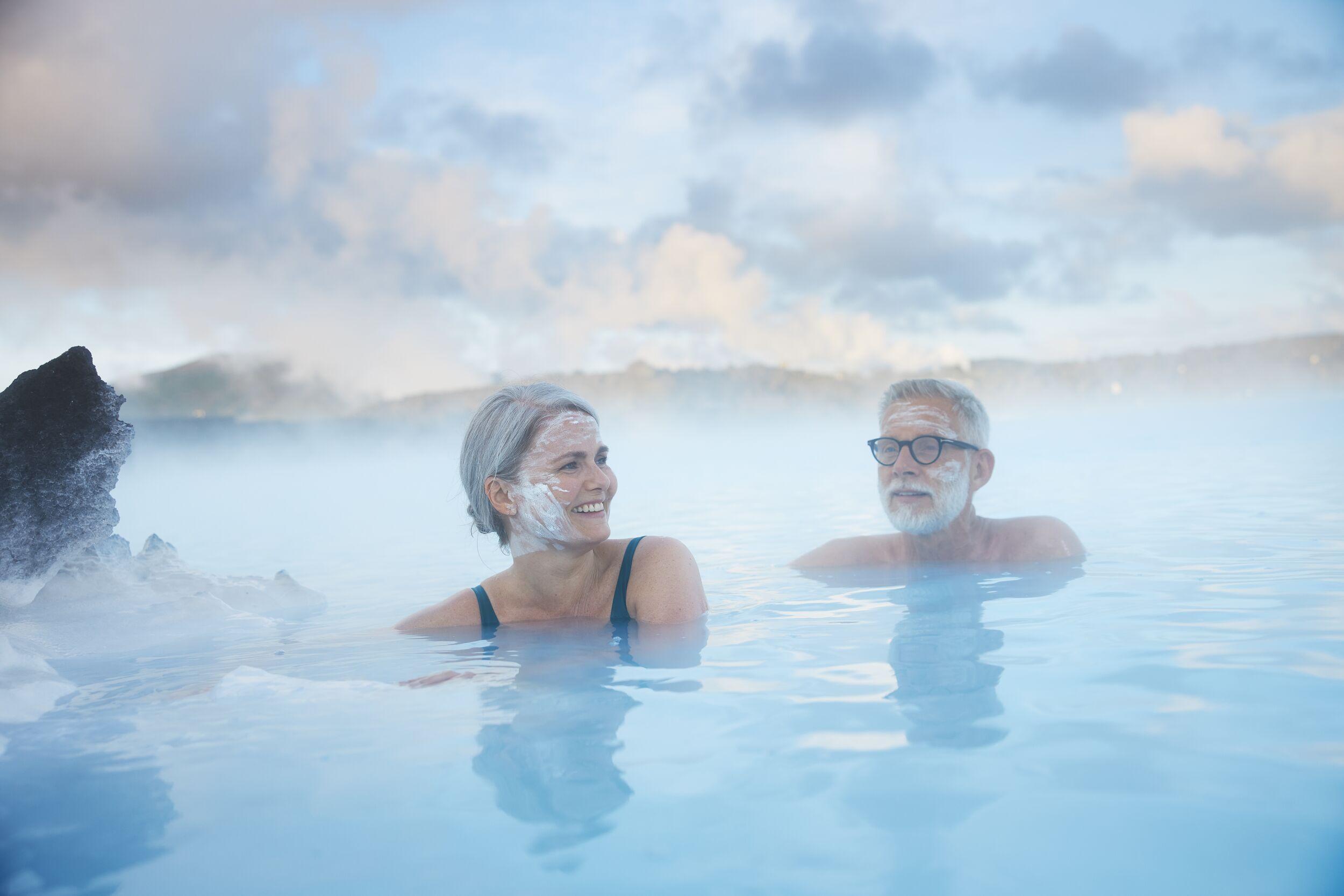
- Multiday Tour
Icelandic Wellness Package - 5-Day
Golden Circle, Fontana Spa, Blue Lagoon & Reykjavík Food Walk. A perfect blend of relaxation, natural beauty, and Icelandic culture, this 5-day (4 nights) Icelandic Wellness package invites you to unwind in Iceland’s famous wellness retreats and indulge in Reykjavík’s unique Nordic atmosphere.


